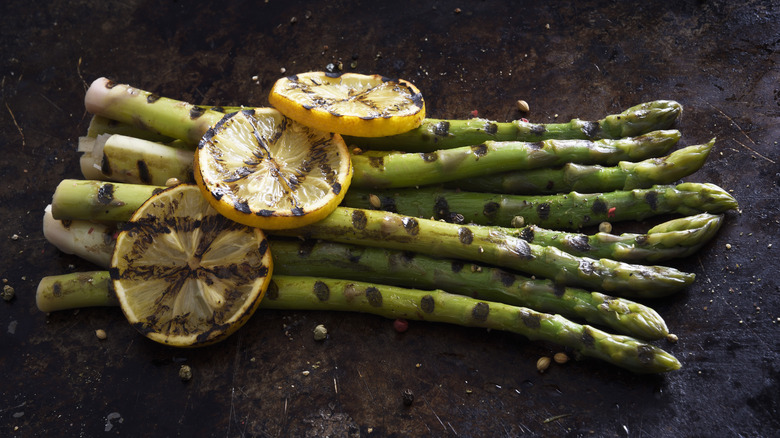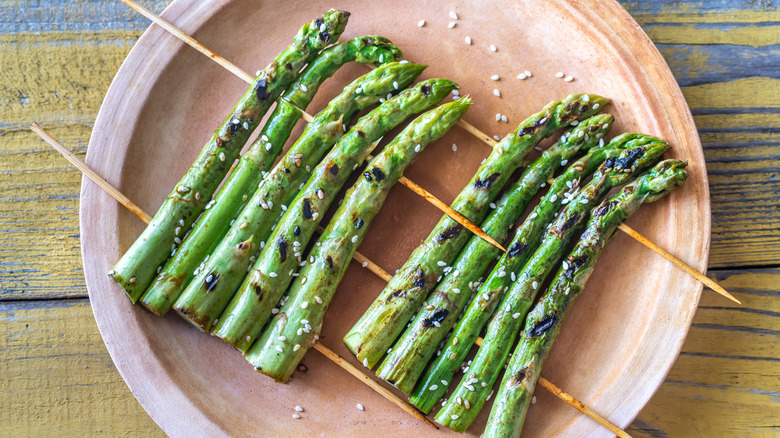Why You Should Forgo Grilling Asparagus Whole
Grilled asparagus is a cookout classic, and easily one of the best veggies that can stand up to the char of your grill. However, even with tips, tricks, and tools, grilling it whole is a challenge for even the most experienced grill master. Due to the vegetable's narrow width and tendency to grow limp while it cooks, it can slip through the grates and fall directly into the fire, becoming unsalvageable. While grill baskets and pans can reduce this risk, asparagus still needs a little help in maintaining its shape and crisping up instead of going totally soft.
There is an better way to grill asparagus, one that creates more opportunities for flavor and is so easy that even a novice can execute it: the chop-then-skewer method. Try chopping the asparagus into uniform, bite-sized pieces for better handling, then toss them in a bowl with oil and flavorings. Just don't use too much oil! This is a common mistake when cooking asparagus that overpowers its natural taste.
By chopping up the vegetable, you create more surface area for your salt and spices, giving each bite far more flavor. Additionally, more surface area means more char from your grill. Using pre-soaked wood or metal skewers, spear the pieces along the length and put them on the grates. All you have to do is flip the skewers once after the first side is done, move them to a plate, then let your guests grab however many they'd like.
The raft method can help you grill asparagus, but it has downsides
If you prefer the look of whole asparagus stalks, some people opt for the "raft" method, in which the spears are lined up in a row, run through at both ends by a skewer, and then laid on the grill. However, this method makes it difficult to cook the vegetable evenly, as the first and last stalks in the row may cook faster. Pushing thin skewers through the tough spears can also be a hassle.
The "raft" also becomes more difficult to flip or remove from the grill once the vegetables start going limp. It requires more dexterity with your hands or tongs to handle properly. You'll then have to remove the skewers before serving, which is simply an unnecessary and finicky step when you could eat perfectly-cooked pieces right off the stick instead.
Skewers aren't the problem in the raft method — it's not cutting up the asparagus beforehand. The chop-then-skewer method is more efficient, promoting even cooking times and easy handling, which simplifies grilling when you're cooking up more than one dish at a time. Now, you have spare time and energy to whip up a homemade Hollandaise recipe as a dipping sauce.


